An earthquake destroyed their home days before Christmas. They still have to pay the mortgage
Just days before Christmas, Jacqui McIntosh and her husband awoke around 2:34 a.m. in terror.
Their entire home was shaking so violently, it split their bed apart – sending them tumbling down the middle. A 6.4 magnitude earthquake had just struck Rio Dell, California, upending homes and lives for the community of 3,400 people near Oregon.
McIntosh remembers rushing downstairs after the shaking stopped, and being hit in the face by natural gas from a broken line. Neighbors were screaming, and the state’s earthquake alerts were blaring on phones.
“I really didn’t think we were going to make it,” she tearfully recalls her husband telling her that day.
The December 20, 2022, quake – which left two people dead and forced hundreds out of their homes – ripped McIntosh’s house off its foundation and shifted it 22 inches to the east, leaving it unlivable, McIntosh said.
Their house was red-tagged – that is, deemed too dangerous to live in by inspectors. Six months later, McIntosh is still paying a mortgage on a house that would cost an estimated $150,000 to fix out of pocket, she told CNN.
“It’s not worth anything,” said McIntosh, who had just found a buyer for their home when the jolt hit. “Now I literally have a giant lawn ornament that’s going to bankrupt me.”
The McIntoshes are among hundreds still dealing with the aftermath of the earthquake in Rio Dell. They and others in the city are also among the millions of Californians who don’t have earthquake insurance to help cover repairs, and among the hundreds of thousands who were living in older homes that have not been retrofitted to meet current seismic building codes.
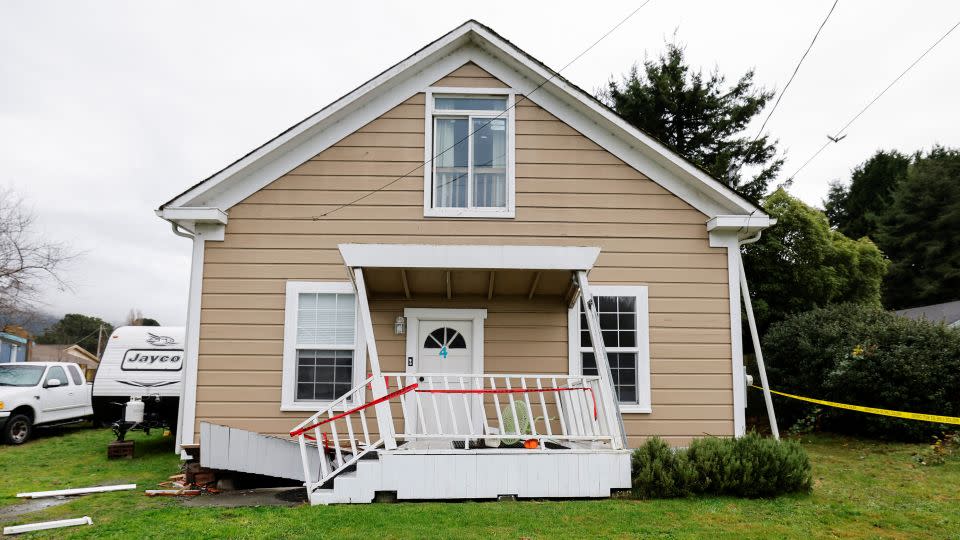
The destruction in Rio Dell has laid bare the risk that many in California run – living in a state that has more damage-causing quakes than any other – without taking, or being able to afford to take, precautions that could limit the destruction and the financial ruin that would follow.
“It’s a gamble to not have it,” Rio Dell City Manager Kyle Knopp said.
A whopping 90% of homes in California aren’t covered by earthquake insurance, according to Glenn Pomeroy, CEO of the California Earthquake Authority, a nonprofit quake insurer established by the state.
It’s a risk many Californians take in some of the most expensive housing markets in the US even though they’re living on a web of active fault lines.
“We do understand that a large-scale earthquake in one of our populated areas is the largest threat we face in the state,” Brian Ferguson, spokesman for the California Governor’s Office of Emergency Services, told CNN. “It’s not a wildfire, or even a flood as we saw recently. We know that the greatest risk here in California is a significant earthquake in a population center.”
When a disaster isn’t declared as one
Rio Dell is in the most seismically active part of California, near the Mendocino Triple Junction, an offshore spot where three tectonic plates meet near Cape Mendocino in Northern California.
The city was left with more than $30 million in damages after the December quake mangled the water distribution system, ripped roads open and damaged about one out of every five homes, city manager Knopp said.
Compounding Rio Dell’s misery was a second significant earthquake of magnitude 5.4 on New Year’s Day.
In Rio Dell alone, the two quakes displaced up to 300 people and left 125 dwelling units red-tagged, and even more yellow-tagged, or moderately damaged, according to Knopp.
But the quakes were not a federally declared disaster – meaning no federal grants were available to residents to help them fix their homes, he said.
The reasons are complicated: FEMA says California didn’t request an emergency declaration in this case. The governor’s emergency services office said it didn’t request one because the “disaster did not meet the federal requirements for an emergency declaration,” but added it has been working closely with local officials on maximizing aid available through state programs.
FEMA says it considers several factors when deciding whether a state’s emergency request should be approved, including by determining the disaster’s severity. It does this partly by considering the damage and the population’s size to see if the cost of aid meets per-capita thresholds.
“If this same event had occurred in Montecito, Beverly Hills or Malibu, it would have been federally declared practically overnight because of the number of the dollar value,” Knopp said.
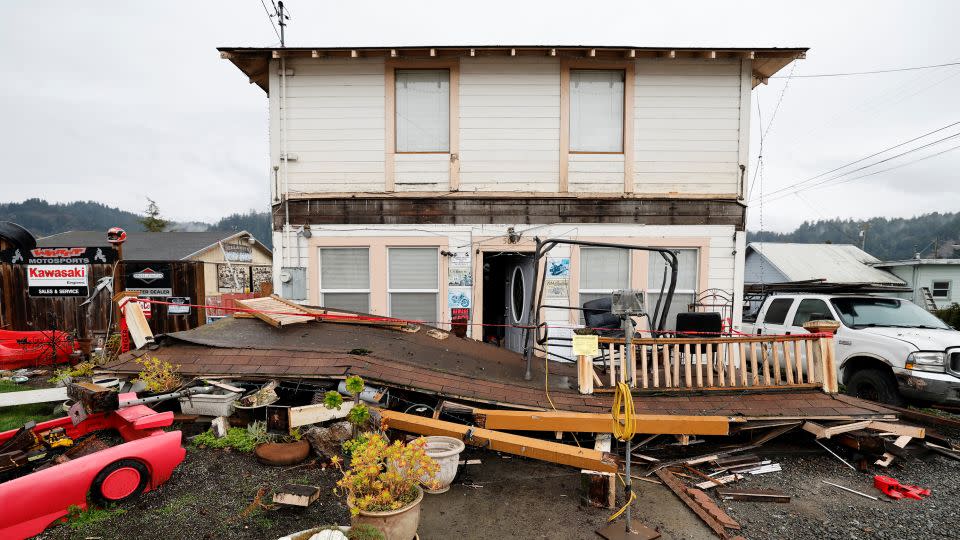
Without insurance, many whose homes were deemed unlivable were left to face repair costs by themselves or take out loans to make fixes.
The damage is something Rio Dell Water Superintendent Randy Jensen knows both personally and professionally.
When the December quake jolted him awake, Jensen’s first instinct was to ignore the damage to his own home and rush to the city’s water storage tanks to make sure they weren’t leaking.
He hurried past his toppled belongings and shattered aquariums that had fallen to the ground with his beloved fish inside, sending water gushing down his stairwell.
“I had cuts on my knees from going through the house. I didn’t realize until hours later,” Jensen said.
Jensen was confronted with broken pipes and helped make the decision to shut off water in the town as he gathered with other officials in the early morning. In the back of his mind, he worried about his home after living through the most violent quake he’s ever experienced.
The next day, Jensen realized the damage to his home was severe. The house, which was built in 1962, was nearly split into two pieces as it slid off its foundation and walls buckled.
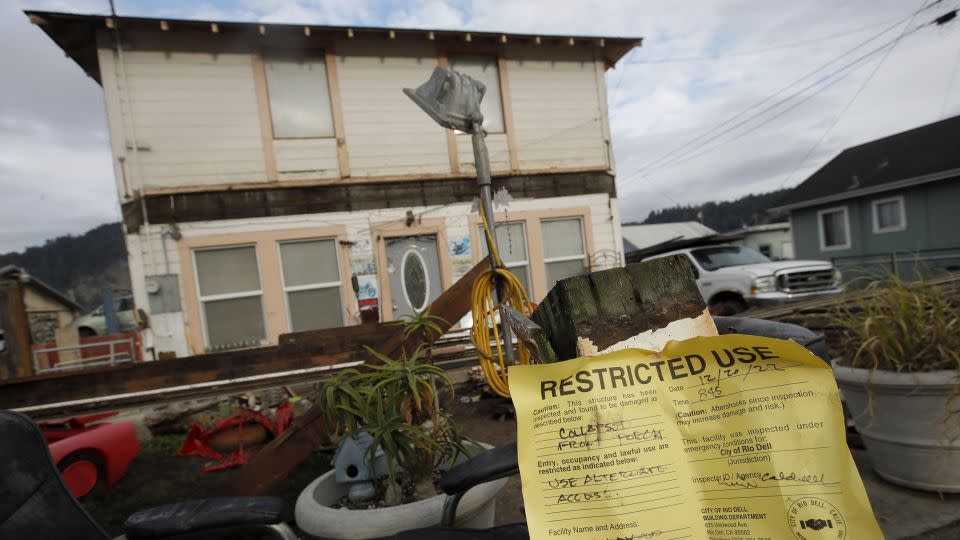
Jensen’s home was deemed too dangerous to live in, and he poured his savings into shoring it up temporarily – just enough to make it safe to stay in. Among all the homes on his block, his suffered the most damage, Jensen said.
“You think to yourself, what did I do?” Jensen said. “How could it just be that it’s this place?”
Knopp said of all the homes damaged, he knows of only one with earthquake insurance.
“Some people might think it’s covered in their homeowner’s policy; others might think the federal government’s going to swoop in and make everything right again,” Pomeroy said. “But as folks in Humboldt County are experiencing, that’s not the case.”
Even if a quake triggers a federal disaster declaration, people with extensive damage still may not receive enough cash to rebuild badly damaged homes, Pomeroy said.
FEMA, when it steps in, can provide money for housing assistance, like a temporary place to stay, or for home repair. The maximum it gives for housing assistance is currently $41,000 per household. FEMA notes this “cannot compensate for all losses caused by a disaster.”
Meanwhile, an earthquake insurance policy can cover the rebuilding of the home – depending on the policy and the deductible amount – and the cost of replacing lost personal property, Pomeroy said.
But that type of security can be costly, with premiums reaching thousands of dollars a year for an older house in high-risk areas – like almost anywhere on California’s western side near the San Andreas Fault.
Some aid has been coming: California Gov. Gavin Newsom proclaimed an emergency for Humboldt County, where Rio Dell is located, in part to help local governments access services. But the state did not provide direct money for home repairs, county Supervisor Michelle Bushnell told CNN.
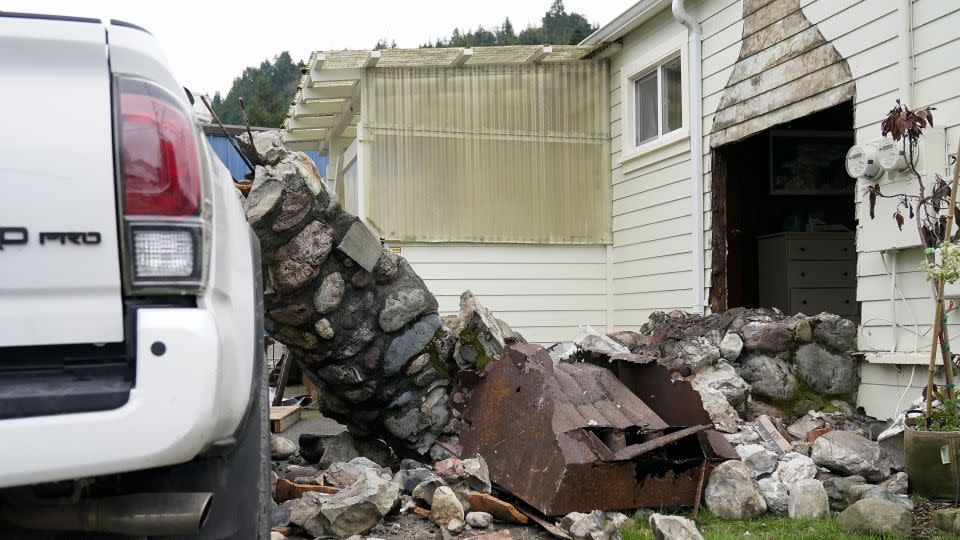
County supervisors allocated $1 million from the county’s general fund to help with recovery efforts. People can apply for some of this money to help rebuild their homes, but income limits apply, Bushnell told CNN.
Also, the federal Small Business Administration offered low-interest loans that homeowners could use to repair their quake-damaged residences.
But it’s not enough to get life back to normal, Knopp said.
Many of the buildings damaged in Rio Dell were of older construction, according to Knopp, made before California’s earthquake building standards were bolstered in the 1980s.
That vulnerability can be found around the state. Experts say the most devastating damage may happen in California’s older structures.
“We have a lot of buildings that we know are highly vulnerable and we haven’t fixed, and we have known for decades,” said Keith Porter, chief engineer for the Institute for Catastrophic Loss Reduction.
California is riddled with buildings at risk of damage
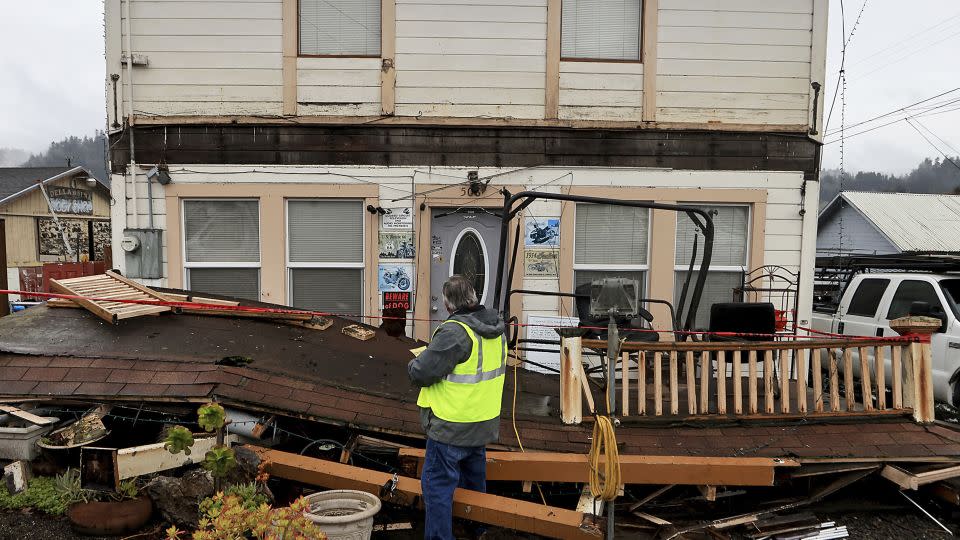
Billions of dollars have been invested in California to make infrastructure and buildings safer, and experts say the state is in a better place now than it was years ago.
Still, homes made before the updated seismic building codes run a higher risk of becoming unlivable because of an earthquake. Some can be improved through various types of retrofitting – but many have not gone through this process.
As an example, more than 1 million homes of older construction in the state’s seismic hazard areas would benefit from one specific type of retrofitting, the California Earthquake Authority estimates.
That “brace and bolt” retrofit – for certain types of homes built before 1980 – involves bolting the foundation to the house’s frame, so the home doesn’t slide off the foundation during an earthquake, according to a CEA-supported program that gives grants for this process.
And dotting major metropolitan cities are older concrete towers that are not constructed to today’s standards and may crumble to the ground during a major quake, Porter said.
Even newer, up-to-code buildings can become uninhabitable after a major jolt, experts say.
“The building code only gives us life-safe buildings, not earthquake-proof buildings,” Porter said.
Different homes may have different safety issues, but homeowners can typically address these issues for a fraction of the purchase price, Porter said.
“You can live wherever you want in California – almost wherever you want in California – and still be safe from earthquakes if you take a little bit extra trouble and expense,” Porter said.
‘Evicted by mother nature’
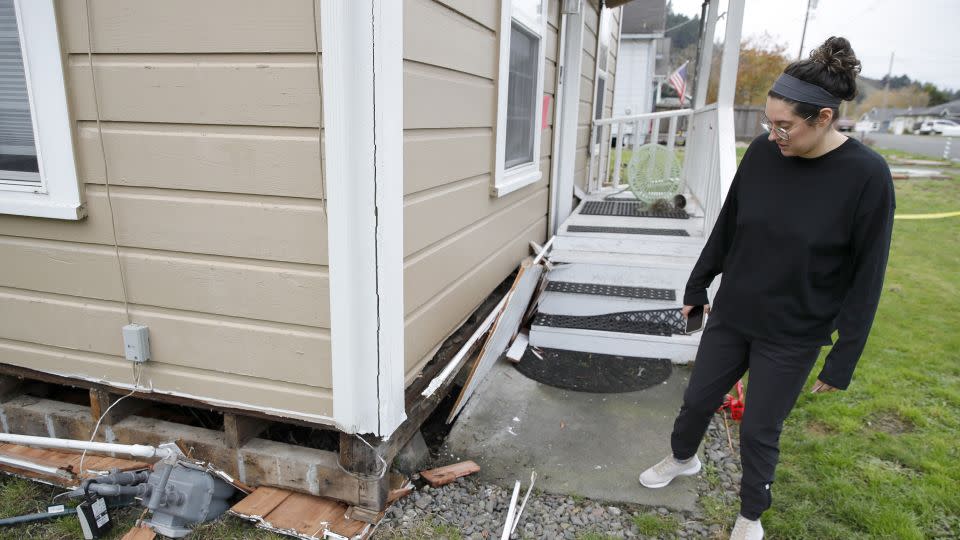
McIntosh now shudders every time she hears the emergency earthquake alarm on her phone when a small temblor hits the earthquake-prone area. “It brings it all back,” she said.
The second quake worsened the damage at Jensen’s home, who faces a mountain of work to restore the residence.
The home of Rio Dell resident Alyssa Jorgensen survived the first quake, then was damaged by the second. The Jorgensen family was told their foundation had shifted out of place, and that it would cost $30,000 to get a new one, she said.
Jorgensen now hopes to move somewhere not as seismically active. Despite seeing how costly earthquake damage can be, she doubts she’ll buy earthquake insurance for her next home.
The premiums and deductibles are too high, she said.
Months after the quakes, McIntosh said she and her husband didn’t qualify for local aid.
Unable to pay the hefty costs of rebuilding, they are grappling with having to foreclose on the home they worked so hard to make their own, McIntosh said.
“I basically got evicted by mother nature,” McIntosh said.
She and her husband have a GoFundMe page set up to raise money to help them recover.
One lesson she wanted to share: “You need to have all the insurances, make sure you check your house, make sure you have all these things covered – because nobody’s coming to rescue you in situations like this.”
For more CNN news and newsletters create an account at CNN.com

